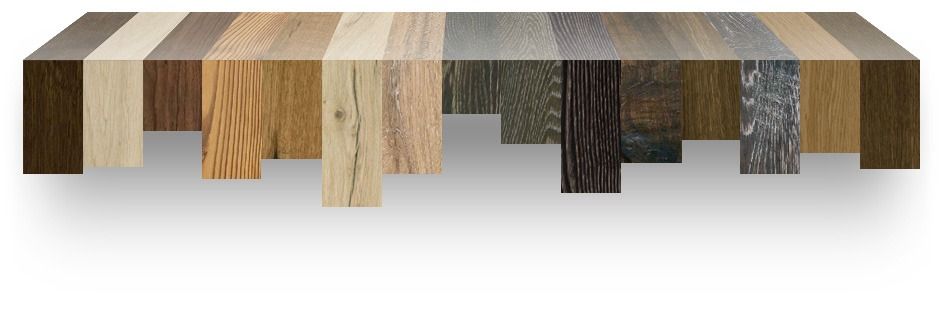
Are you in desperate need of a flooring refresh? Have no fear, as we’re able to supply all of the tips and tricks you need to refinish your floors and get them looking as good as new!
We understand that flooring is an essential part of your home. You walk back and forth upon your floors multiple times per day, and they tie the overall look of your home together. So, let’s look at the key steps needed to get your floors their “eye appeal” back in no time.
From looking at the different ways to refinish your floors to learning the difference between lacquer and oil floor toppings, you’ll become the family flooring expert in no time.
Let’s get started, shall we?
What Materials Are You Using?
First things first! Let’s learn what materials should be used throughout this process and what kind of actual wood you already have on your floors. Why? Because you need to know exactly what materials you’re dealing with in case you encounter a poor reaction while in the middle of this process. It’s good to know that all the materials utilized are compatible with each other.
If materials are not compatible, then there could be more harm done to your floors than good. So, it’s important to do your research, as it will save time down the line.
There Are Three Ways to Refinish Your Floors
Did you know there’s not just one way to refinish your floors? There are three! So, when looking to refinish your floors, we must examine the following three potential ways each can be used to give your home the refresh it deserves.
· Use a store-bought chemical abrasion kit
· Buff and recoat the floors with polyurethane
· Try a revitalizer
Which method do you think will work best for you? Not sure yet? That’s completely ok because we’re going to learn more, so you can make an educated decision that is best for both you and your flooring! You need to pick the refinishing method that will be easiest for you to handle. After all, it’s you who is completing this exciting home improvement project!
Refinish Your Floors in 5 Easy Steps
Let’s jump right in! We have broken the process up into five easy steps to keep your floors looking great for years to come. There are no crazy, unnecessary maneuvers, and you don’t need to worry about a professional being involved in any of these activities. Great news, right?
Simply follow these five easy steps, and you’ll have your floors looking great in no time!
Step 1: Clean the Floors
It’s essential to make sure your floors are thoroughly cleaned and spotless before really beginning this process. Use a pH-balanced cleaner or warm water. Either will do the trick! Make sure to scrub the floors down evenly, but don’t drench them. A damp cloth or rag won’t cause any damage to your floors.
Step 2: Is Your Floor Finished with Oil or Lacquer?
It’s sometimes difficult to determine the difference between oiled or lacquered flooring for anyone who isn’t a professional. Obviously, the best way to know is if you were present when the original floors were installed. If not, these are the following ways to be able to differentiate between oiled and lacquered flooring.
· Oil or hard waxed oil floors normally wear more quickly on the top layers.
· Oil floors tend to be slightly darker in color.
· Oil floors stain easier, and a spilled drink leaves a mark.
· Lacquered floors are lighter in coloring.
· Lacquered floors don’t wear as easily and quickly.
· Lacquered floors have a shinier surface.
Step 3: Abrade the Surface Only
Now, you must use a sanding machine or sandpaper and only rub the floors slightly on top. Make sure to evenly sand throughout and not miss any spots. Don’t put too much force on the surface, especially since real sanding isn’t the goal. We just need the new coat for the floors to stick evenly to on top. This will inhibit the new coat from peeling.
Step 4: Vacuum Your Floors
Next, vacuum the floor and get rid of all dust. This is done so the coating doesn’t trap anything underneath it. Maneuver the vacuum around the room slowly, so that nothing is missed, and you can ensure a successful and beautiful coating across your floor.
Step 5: Lacquer or Oil the Floors
Now that your floor is properly prepared, all you have to do is smoothly coat it with lacquer or oil. You can use a medium-sized roller for the most complete coverage. However, if you happen to be using oil, then a short-sized roller is usually much better.
And voila! That’s all you have to do to achieve newly refinished floors! Not only is it an easy solution, but it’s also a super affordable option for those who are looking to beautify their home but not get thrown into a brand-new flooring project.
Always Test Out Your Floors
Before you begin this home refinishing project, make sure to test out your floors first. This is going to be the most effective course of action you’ll take because it will fully determine if the lacquer or oil is actually going to stick to your floors (before you do your entire house and realize it doesn’t work). If the oil or lacquer doesn’t stick, then you don’t want to waste your time and energy on this type of project.
Start by taping off a small section of your flooring and buff that area of the floor with a sanding screen to test out the refinishing materials. If the floor begins to flake after scraping a coin against it or it resembles a bumpy texture, then sanding will be the best route for this type of project.
This is When You Should Sand Your Floors
Unfortunately, there are a few select times where sanding your floors can’t be avoided if you really want to fully renovate them. In fact, here are the following few instances where sanding is actually suggested:
· When you have wax-finished floors because the finish won’t bond.
· When you find other chemicals that will prevent the new finish from binding to the floors.
·If the floor has deep scratches or dents, then sanding will be the only way to remove those from the hardwood.
· In high traffic areas where the floor is flaking off, sanding will aid in restoring a new, clean finish.
If any of your floors reflect the following conditions, then it’s best to make sure everything is sanded to restore the beauty of your hardwood floors. You don’t want to topcoat your floors only to have them look half clean and unfinished. If this occurs, it will create a greater issue that will take much longer to fix the next time around.
Our Final Thoughts
After learning the process, how do you feel about refinishing your floors without sanding them? We find that if the opportunity presents itself where your floors are in the perfect shape to perform this DIY method, then it’s a real time and money saver!
Refinishing your floors should be a simple process, and it shouldn’t feel like a chore or a hassle. In fact, this is one great home renovation that will increase the value of your home and restore the look of your home.
Are you refinishing your floors, or have you had your floors refinished in the past? If so, you know that home renovations of any kind are an exciting time because the finished product usually brings so much beauty and joy. In the end, these exciting projects can definitely be marked as cool new home-living milestones!
Sources:
https://www.hunker.com/13414716/how-to-refinish-old-wood-floors-without-sanding
https://howtosandafloor.com/how-to-refinish-a-wood-floor-without-sanding/


